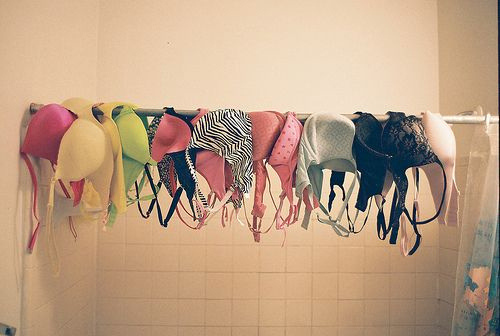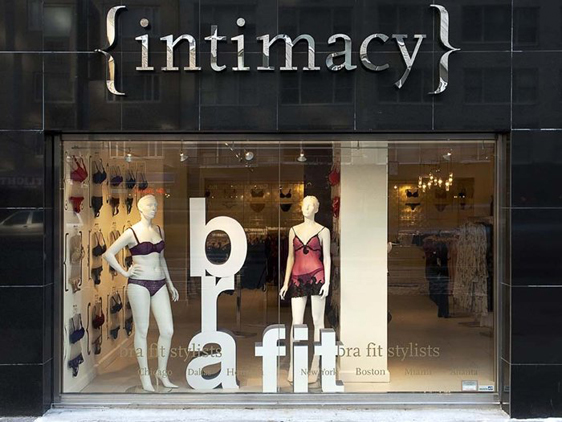Here as a part of giving our readers a new flavour regarding the realities of the
Indian Lingerie market, we have started a column direct from the expert’s pen. With an experience of more than 20 years up his sleeves, Nischal Puri a veteran in the apparel and retail industry today, has begun his own consultancy firm, Horizon India. After seeing many notable lingerie brands to their glorious present, Puri has now decided to add another feather to his cap and an intent to spread his extensive knowledge and understanding with the industry, he has taken up to penning down the same for us. He is a successful entrepreneur and an established thought leader and consultant. He can be reached at npuri@horizonconsultingindia.com
This article marks the third chapter of his long exclusive, informative series: ‘What woman want’. This 6 article series will capture the insights of the Indian lingerie market and consumer trends besides noting the dynamics witnessed in this category – as a result of nation wide research by Horizon consulting India.
Future of lingerie retailing
8 years back Indian lingerie retail experienced an consolidation attempt by a leading group based out of north India. Straps a multi branded organized retail format was initiated by the Ludhiana based spinning behemoth. The initiative backed by enough resources and insight from a leading retail consulting company doomed despite all the humble intentions. The retail consulting was right in telling the client that the Indian consumer has lot of dissatisfaction with the hosiery stores retailing lingerie and that there is a huge vacuum waiting to be filled by an organized lingerie retailer. But perhaps what the consulting company failed to capture was the buying pattern of the consumer, what are the retail behaviour of the consumer and what are the said and the unsaid needs of the consumer.
There is a reason to begin this paper with a failed venture, to decode the Indian consumer’s lingerie buying behaviour, its important to understand what has not worked.
If the multi branded organized lingerie exclusive venture failed and since not many have garnered enough strength and resources to reinitiate a similar venture, the fate of the exclusive brand outlets of the lingerie exclusive brands are not too encouraging.
Most of the lingerie brands attempted to enrich the consumer experience by fancy stores however the success story is still awaited to be written. While the pan India lingerie chain is still to make its mark in the Indian market, the lingerie segment is continuing its 18 – 20% per annum growth. So what form of retail is catering to this growth, which retail segments are more successful, what are the consumer retail preferences, which brands have the best consumer retail experience recall how can brands benefit from the consumer insights.
Horizon Consulting India conducted a 5 city 150 top lingerie retailers survey and we are glad to share some of the key findings.
What are the most important factors influencing consumer buying decision?
On an average the retailers researched retailed 9 lingerie brands. 4 brands out of these 9 are almost permanent in the store while the retailer experiments with the balance 5 brands. The non core brands are changed depending on the availability, innovation and consumer demand.
65% of the retailers claim that only 15% of the consumers are pre decided on the brand they desire to buy and 85% of the consumers can be influenced by the retailer on the brand preference. The role of the store sales person emerged as one of the most important influencer in the buying decision.
How does the retailer influences the decision for the brand?
Retailers seems to be enjoying substantial power in influencing the consumer preference, The retailer power is perhaps a function of inability of the brands to develop strong consumer connect. Further to this the product differentiation is not very strong in the category. 55% of the retailers mentioned that the product offerings of the brands are way too similar for consumer to develop any preferences. There seems to be a minimum denominator factor working in the category, where in all the brands have similar offerings and all the offerings are with all the brand.
The strong bargaining power in the hands of the retailer is a threat for the brands, marketing investments and consumer enticing initiatives largely get zeroed at the retail point. The challenge in front of the brand corporates is to tangent out the brand and get closer to the consumer in innovative way and drive the consumer preferences towards their brand.
As the retailer continues to enjoy disproportionate power the impact is on the bottom lines of the brands. The retail margins is touching the ceiling with 40% being the norm. Brands need to re strategies their retail plan and drive the category by pull strategies rather than push plans.
How does the consumer react to brand display?
75% of the retailers mentioned that brand display doesn’t have much influence for the consumers. with almost 95% retailers relying completely on over the counter sale method the brand display emerged as a non influencer.
The lingerie purchase continues to be assisted sale category, the consumer has price and colour preferences and needs counter sales person to show the options. The stores retailing lingerie does not have the luxury of space and almost looks like cramped, the packaging and the display has limited role to play. While packaging perfection has emerged as an hygiene parameter the display control in the hands of the brands does not exist.
What is the market share of the largest brand in the retail store?
75% of retailers have the largest selling brand with 25% market share while only 25% of retailers had largest selling brand share of 40% .
Poor market share of the largest brand is a testimony of the fact that the most preferred brand badge is still not claimed by any brand. While most of the brands are hovering with market share of 5-10% in the retail store there are many intricate balancing forces playing to give this result.
On an average retailer stock not more than 15% of the brands product, the merchandise selection done by the retailer is in consideration of the margins, map and the style cannabalisation. Retailer refrains from keeping similar styles from different brands, and the price point theory is more complex algorithm. For the styles that the retailer perceives as fast movers the retailer favours a high price point brand while for the non core products the retailer prefers to enjoy the price war unleashed by the brands.
The insight is extremely crucial for brands to plan the merchandise both in terms of styling and pricing.
lingerie retail is evolving and it will be another decade or so for it to emerge as a perfect science. The retail enjoys extraordinary power and influence, unless the brands are able to evolve an strategic plan for marketing and merchandising they will have no choice but to keep incentivizing the retail and in lieu to that keep the bottom lines humble or compromise on the product features.
Phase of consumer preferences playing stronger role is still to be witnessed in the segment. it will be interesting to access the category after few quarters to see how the needle has moved.





















